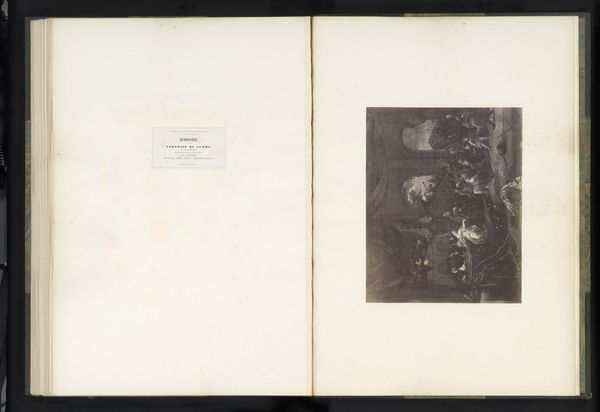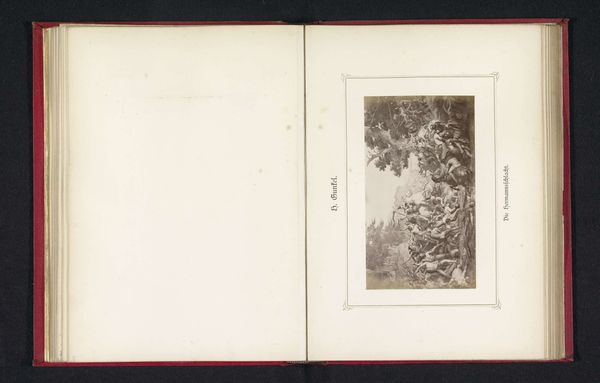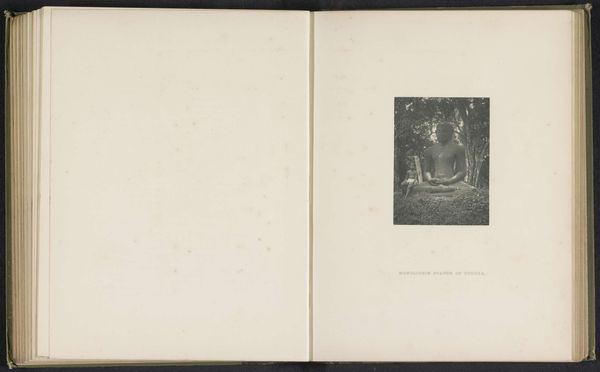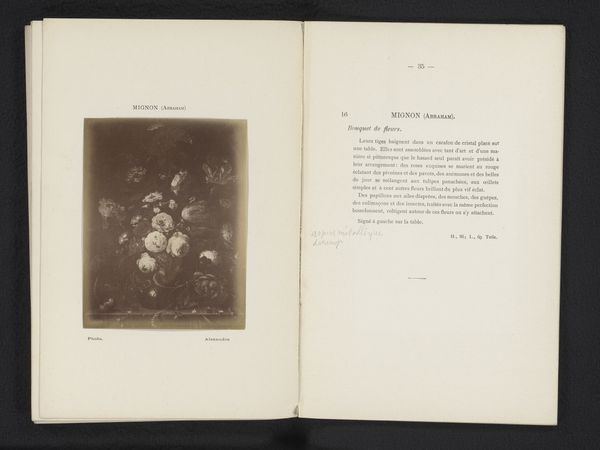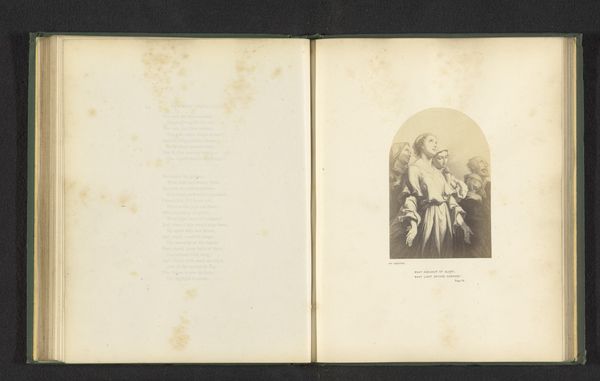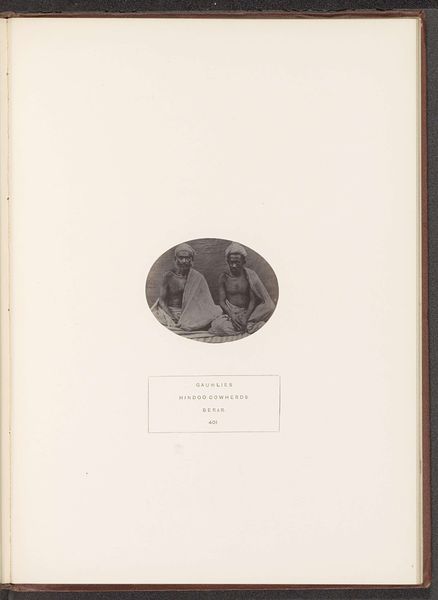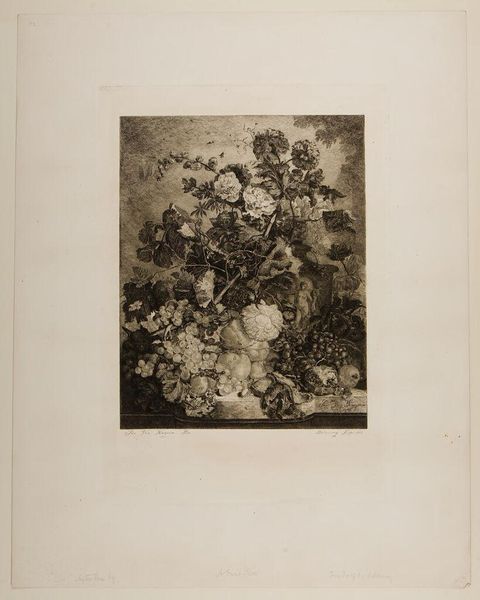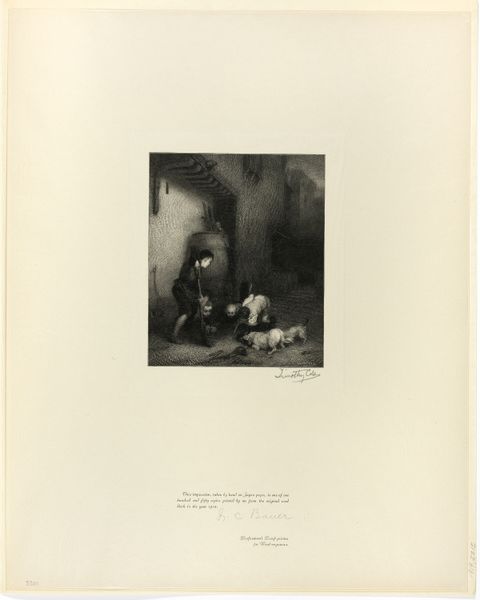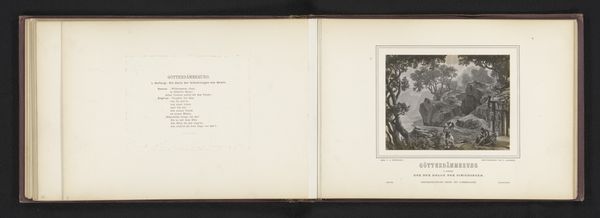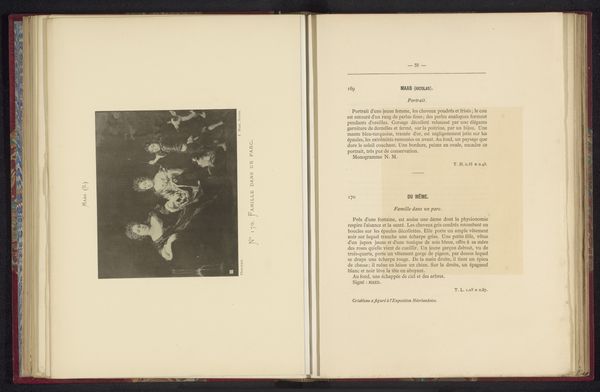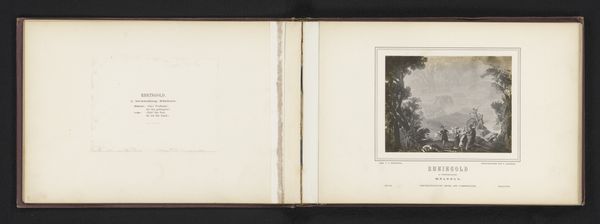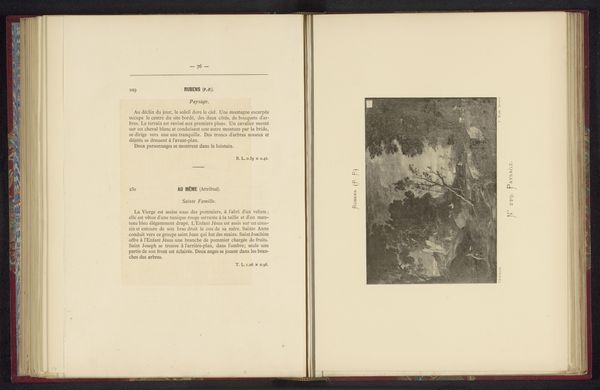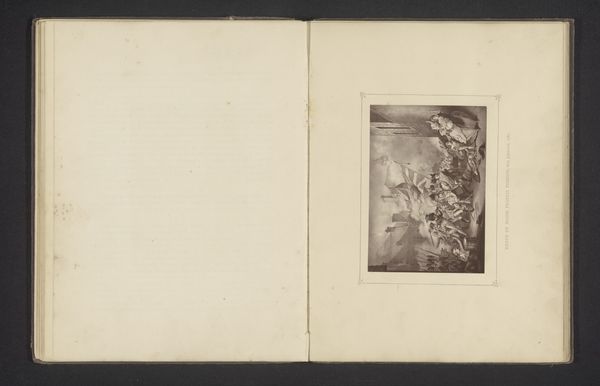
Fotoreproductie van een schilderij, voorstellende David met het hoofd van Goliath before 1857
0:00
0:00
print, paper, photography
#
portrait
#
aged paper
#
homemade paper
#
paper non-digital material
#
pale palette
#
pale colours
# print
#
light coloured
#
white palette
#
paper texture
#
paper
#
photography
#
personal sketchbook
#
folded paper
#
history-painting
Dimensions: height 133 mm, width 102 mm
Copyright: Rijks Museum: Open Domain
Editor: This is a photo reproduction of “David with the Head of Goliath,” dating from before 1857, by Hippolyte Malègue. It’s printed on what looks like aged paper. The scene feels… theatrical, even staged, but with an undercurrent of violence. What catches your eye when you look at this image? Curator: I am drawn to the stark contrast between the triumphant, almost nonchalant, pose of David, adorned with feathers, and the severed head of Goliath. The feathers are quite interesting because they serve a double meaning -- feathers, traditionally, symbolized truth, lightness, and freedom but over time these associations shift and here, they seem to mock those values. Editor: Mock? How so? Curator: David presents Goliath's head, a symbol of victory but the addition of the feathered hat lends a sort of arrogance, as if this heroic act were just a performance. Editor: That's interesting. So you're seeing a critique of heroism here? Curator: It is not necessarily a critique, but rather an examination of its performance. In many cultures, the head represents power, knowledge, identity. By displaying it, David claims those qualities for himself, becoming a figure of legend and perhaps, someone removed from reality. Does that reading make sense to you? Editor: It does. I was initially focused on the violence of the image, but I now see the layers of symbolic meaning embedded in the composition and details. Curator: Precisely. It is in examining these symbols and their transformation that we gain a richer understanding of both the image and our cultural memory. Editor: I learned a lot from hearing you speak, especially how symbols are tied to both visual culture and historical moments. Curator: As did I, you offered a great close read. Thank you!
Comments
No comments
Be the first to comment and join the conversation on the ultimate creative platform.
